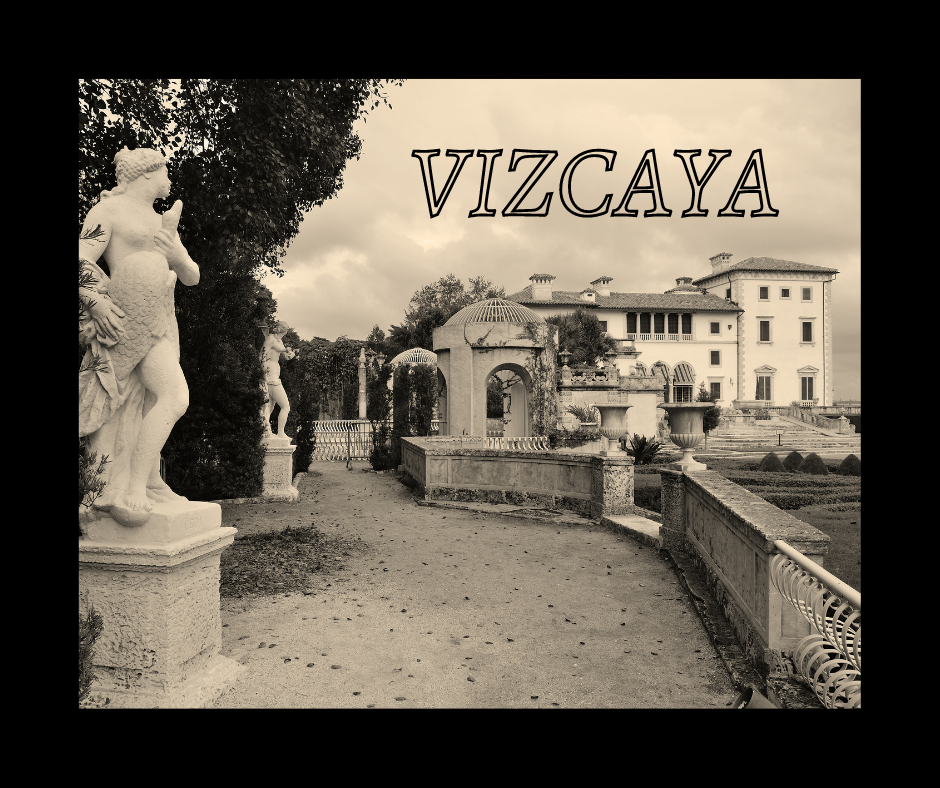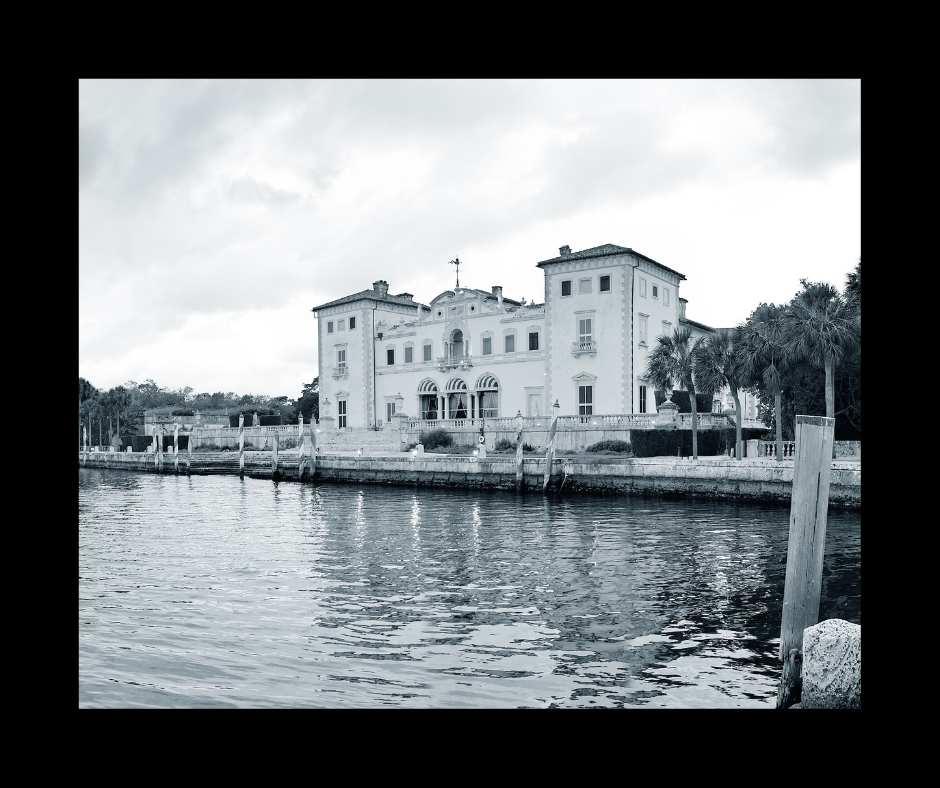
Tucked within northern Coconut Grove, lies an impeccable landmark. Vizcaya Museum and Gardens is a lasting, gorgeous structure of European essence. Overlooking the pristine waters of Biscayne Bay, this beautiful estate offers a refreshing serenity to the otherwise extravagant and flashy rhythm of Miami. The stunning architecture attracts thousands of visitors a year, making it one of the city’s most popular sights. But how did a vast Italian villa end up in South Florida? Let’s take a look at the history of Vizcaya.
Vizcaya came to fruition by the dream of one James Deering. Deering was the vice president of the International Harvest Company, an American manufacturer of agricultural and mechanical equipment. In 1908, after retiring from his position, Deering purchased some property in Miami (130 acres to be exact) in the hopes of building something great. A few years later, in 1910, Deering met artistic director Paul Chalfin – both men developed a close and friendly relationship thereafter. Deering and Chalfin shared an affinity for European aesthetics, especially that of Italian villas. They traveled to Italy and traversed the lush lands seeking inspiration and ideas for their project. They also purchased antiques and opulent decoratives to embellish the property.

Deering hired the architect Francis Burrall Hoffman, Jr. to design and construct the main property, and tasked a young, but promising Colombian landscape architect to construct the gardens, Diego Suarez. With his team in place, Deering awaited his Italian mansion. The project faced challenges as World War I consumed Europe, but the work continued. By 1916, the Main house was completed, and the surrounding gardens, extensive and manicured, were done by 1923. Tragically, a twist occurred in the life of Deering, as he died in 1925. Vizcaya then passed down to his brother Charles Deering, who later died in 1927. Finally, the estate fell onto James’ nieces.
By 1927, Vizcaya had been hit by a strong hurricane, and again in 1935. Great damages were caused to the main house as well as the nearby villa and gardens. To recuperate Vizcaya’s image, Deering’s descendants contacted artistic director Paul Chalfin to fix the damages. Chalfin had great influence in restoring the main house and converting it into the museum that it is today. Unfortunately, as the years passed, Vizcaya fell into the forgotten. The estate lost its splendor as it stood dormant by the bay’s waters. And in 1952, in desperate need of restoration, the estate was sold to Miami-Dade county for a total of $1 million – $10.6 million with today’s inflation. The county turned the estate into the Dade-County Art Museum; the heirs donated all the art pieces and antiques residing in the villa.
Vizcaya’s opulence made it not only popular with tourists, but also a target for thieves. In 1971, three New York residents raided and stole $1.5 million in art, jewelry, and collectibles. Three days later the robbers were found and caught in New York City; however, only a small fraction of the stolen items were recovered and brought back to Vizcaya. Regardless of the challenges, Vizcaya Museum and Gardens continued to attract locals and tourists alike for decades to come. In 1994, to celebrate its important status in Miami, Vizcaya was designated a National Historic Landmark to guarantee that future generations will enjoy this Villa full of both enchantment and history.
♦
Want to explore Vizcaya? With us at Gray Line Miami, book your very own tour of the Vizcaya Museum and Gardens! Embark on this cultural and historical outing.! Explore the main house, the pristine gardens, as well as the ageless works of arts and antiques that fill this spectacular Italian-styled Villa.